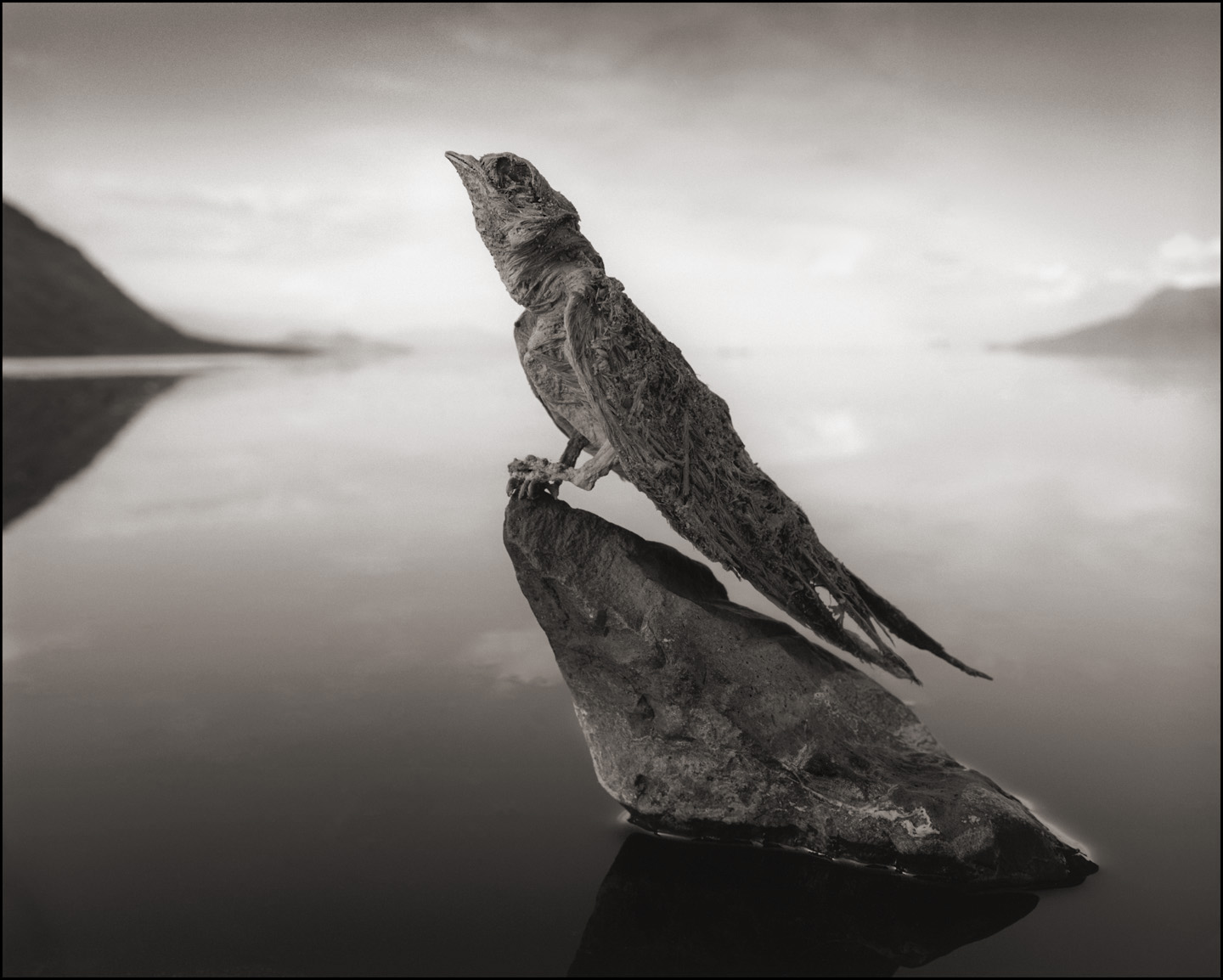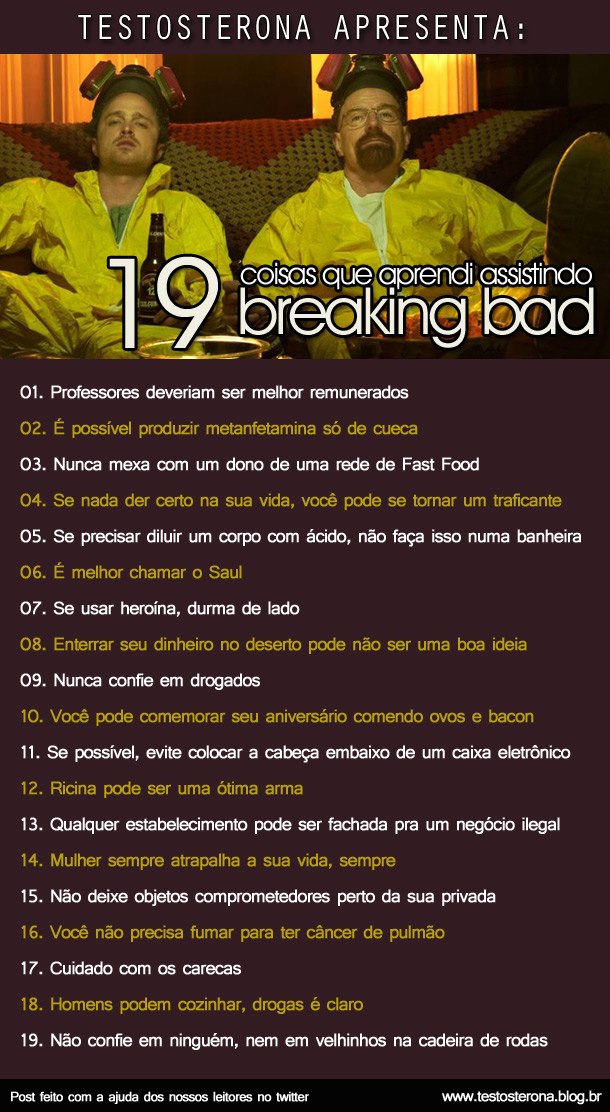Submitted by: (via Lab Humor)
Shared posts
Qualquer animal que toca este lago mortífero se transforma em pedra
Há um lago na Tanzânia, na África, com um segredo mortal: ele transforma qualquer animal que o toca em pedra. O raro fenômeno é causado pela composição química do lago, e as criaturas petrificadas que ele cria parecem ter saído de um filme de terror.
Isso acontece devido ao pH do lago, que fica entre 9 e 10,5 – uma alcalinidade extrema que preserva os bichos por toda a eternidade.
Elas foram fotografadas por Nick Brandt para seu novo livro, Across the Ravaged Land (Por toda a terra devastada). Ele diz:
Eu inesperadamente encontrei as criaturas – todo tipo de pássaros e morcegos – ao longo da costa do Lago Natron, no norte da Tanzânia. Ninguém sabe ao certo exatamente como eles morrem, mas parece que o lago reflete bastante a luz e isso os confunde. Assim como pássaros colidem com janelas de vidro, eles caem dentro do lago.
A água possui um teor extremamente alto de base e sal, tão alto que consumiria a tinta das minhas caixas de filme Kodak em poucos segundos. A base e o sal fazem as criaturas se calcificarem, perfeitamente preservadas, à medida que secam.
Eu tirei essas criaturas de onde as encontrei no litoral e, em seguida, coloquei-as em posições “vivas”, trazendo-as de volta para a “vida”, por assim dizer. Reanimados, vivos outra vez na morte.
Abaixo, temos mais imagens fantasmagóricas. Você encontrará todas no livro de Brandt, disponível aqui. Ou você poderia visitar o lago por si próprio, mas por favor: fique longe da água. [New Scientist]





Todas as imagens por Nick Brandt © 2013. Cortesia da Hasted Kraeutler Gallery, NY.
sweaterkittensahoy: Some days, you just can’t get rid of a...
A Simple Experiment to Change Your View of Words

“Most of the successful people I’ve known are the ones who do more listening than talking.” —Bernard M. Baruch
Long before becoming minimalist or embracing my love for writing, I attended a Graduate School in St. Paul, MN to major in Theological Studies. It was an intensive three-year program that focused on spiritual understanding and spiritual formation—I have since come to realize there is indeed a great difference between the two.
As part of an assignment for a personal development class, I was asked to refrain from speaking for 24 hours. “Pick any normal day,” the professor said, “and try not to say anything. That’s your assignment. We’ll talk about your experience when we return next week.”
The assignment was met with skepticism. But as I woke up on my selected day, within the first hour, I began to see the logic. By the end of the 24-hour period, my view of communication and the words we choose had changed forever. And I learned valuable truths about myself and my motivations.
It was, in fact, far more enlightening than I ever imagined.
As the professor outlined the assignment, he warned, “It’s very likely you will have to speak at some point during the day. It is difficult to make it through an entire day without communicating at all. But when you do have to speak, immediately go back to silence. Find space to dwell on the words you chose and the motivations behind them.”
This, then, became the greatest learning opportunity of the experiment. After speaking and returning to silence, my mind was left to dwell on the words I chose, my attitude in my speech, and my internal motivation behind it. Or when I didn’t speak, but really wanted to, I was forced to discover why I wanted to speak in each situation.
I quickly learned of my desire to control situations or convert someone to my opinion. Sometimes my words were motivated by love, but far more often than I’d like to admit, they were motivated by selfish pursuits, personal ambition, or a desire to impress others.
We often speak for the purpose of control: to control what people think of us or to make sure people do what we want done in the way we want it. We often use our words to cover-up or hide our mistakes or faults. We use words to explain ourselves to others. Hugh Prather may have been right when he said, “No matter what we talk about, we are talking about ourselves.”
Refusing to speak forces us to embrace silence. And in a world addicted to noise, idle chatter, and meaningless words, silence can be very uncomfortable. But there is great life to be found in solitude—if only we’d give it opportunity.
It was, indeed, a heart-revealing assignment that resulted in personal (and spiritual) development. Even 10 years later, I remember it well and I have recommended it countless times to others. Today, I recommend it to you.
To conduct a 24-hour experiment of your own, here are a few helpful tips:
1. Choose a “normal” day. For example, don’t choose a day you already planned to be alone in the woods or driving a car alone for 8 hours. Choose a day where you will engage in normal relationships with other people. Avoid excessive external stimulation: MP3 players, radio, television, video games. Provide space for your thoughts.
2. Inform your closest relationships. Tell your spouse and/or kids about your experiment. If appropriate, inform your co-workers. This will be helpful as the day unfolds—and a bit comical as they try really hard to get you to talk.
3. Don’t be rude. Don’t be unloving. Just decide not to speak unless you are spoken to.
4. Study the silence. Is it difficult? Uncomfortable? Do you feel an urge to talk just to break it? And if so, why?
5. Notice your urge to speak. They will be far more common than you expect. Investigate your intention when you feel the urge. For what reason did you feel compelled to speak?
6. When you do speak, choose words that are “few and full.” And then return to your discipline.
7. After you speak, journey inward. Wrestle with the words you chose. Why did you choose them? What were you hoping to accomplish? And what were your internal motivations in choosing the words you did?
8. If possible, choose a friend to do the experiment with you. You can send them this post for motivation and information. Afterwards, share your victories and your failures. Together, you’ll be able to process the day better.
Talking can be fun. But silence can be life-transforming. We would be wise to provide it more opportunity.
Image: John Lemieux
How to Choose Where to Sit
Designer Alex Cornell helps you figure out how to choose the best seat, or at least “how not to get stuck next to someone that sucks,” with this helpful infographic.
One of the most complex social situations you will encounter is the 45 seconds that elapse while deciding where to sit for dinner at a restaurant. Your choice should appear natural, unbiased and haphazard if executed properly. Timing is everything.
These 45 seconds determine how enjoyable your next 2 hours will be. Once the pieces start to fall into place and people take their seats, your choices narrow. People sit, seemingly at random, and if you don’t take the appropriate measures, you’re inevitably stuck at the least interesting end of the table.
submitted via Laughing Squid Tips
O pensamento das mulheres e a banalização do estupro
Vejam essa discussão no mínimo polêmica. Eu vi no Malvadas e achei que merecia ser compartilhada aqui, afinal, essa mulherada é muito doida das ideias. Pensem bem no que está nessa discussão, porque ela é muito séria.









